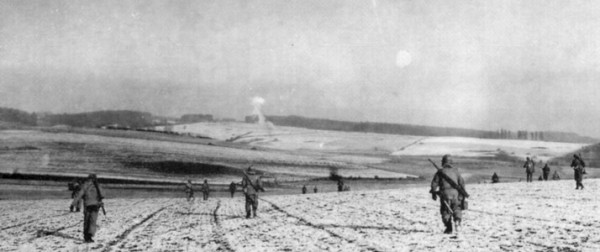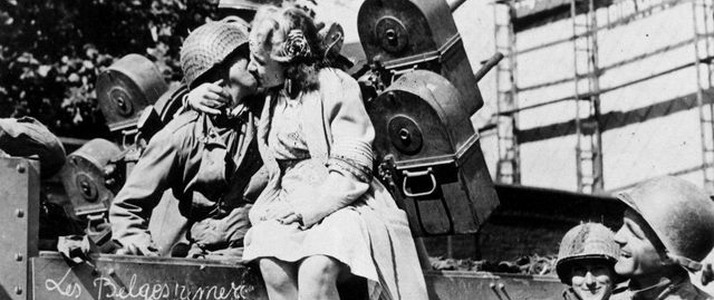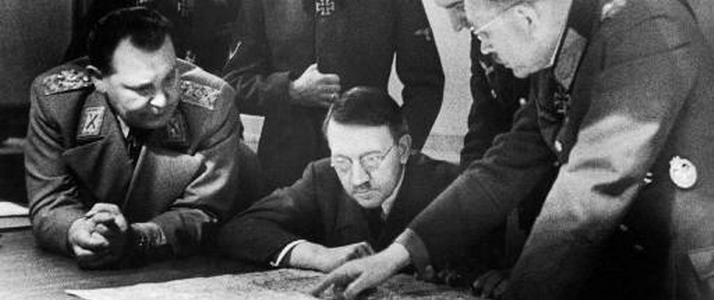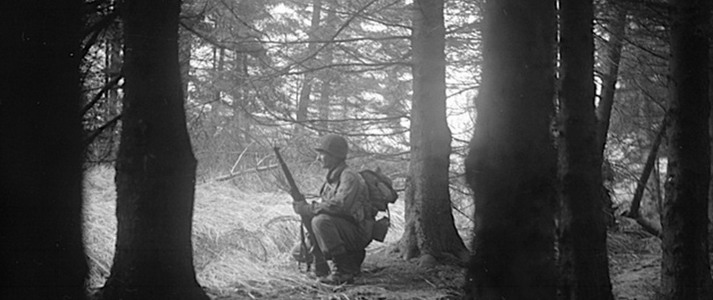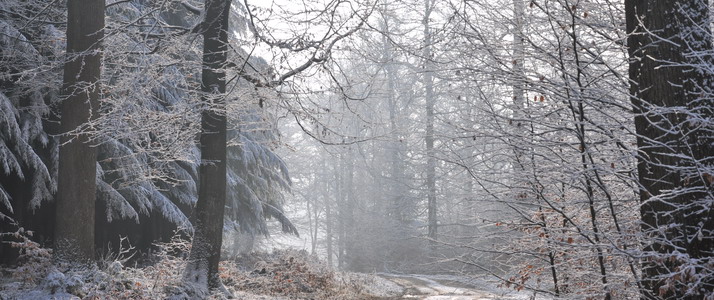The Battle of the Bulge commemorates its 70th anniversary
1
juin
2015
Par Fanny Lardot 1 juin 2015 Catégories 2nd World War Pas de commentaires
Why does it so interest the Führer?
Who still remembers the 44-45 winter? Indeed, the cold has never been as punishing as that year, but those freezing cold weeks are also known as Hitler’s last great offensive, ready to launch all his military forces still standing in order to win the conflict. Today, who can still bear witness to these fierce battles between the German and Allied troops ? Our parents or grand-parents, most of them children at the time, are the last to tell of the violence sustained by the Ardennes and its inhabitants.
By this article, relive the events that led the Führer to invade, for the second time since May 1940, the Ardennes forest considered however since centuries as impregnable.
September 1944, Germany is caught in a pincer movement
During the summer of 1944, Nazi Germany’s horizon grows darker and its ambitions slowly decline. However, two years previously, during the spring of 1942, it was at the hight of its glory. The Allies landed in Normandy on June 6th to start their mission as liberators of Europe. This event is a psycho-logic electroshock for Germany. Progressively, the large cities regain their liberty: Paris is liberated on 25 August, Brussels on 4 September by the British troops and the Grand Duchy of Luxembourg on 10 September. On the eastern front, the situation is just as bad for the soldiers of the Führer. The Soviet Union is much too widespread to obtain a decisive victory. Furthermore, its group of armies was squashed by an offensive during the summer and the Soviets continue to advance in their direction.
Hitler’s tactics
Since the murder attempt of 20 July 1944, known as the plot, Hitler is physically and mental weakened. He considers his survival as a miracle: he alone can still save Germany. He estimates that he disposes of sufficient material and human means to launch a new offensive against the Allies. He wants it to break through the Ardennes, weakly defended by the Americans, and that the armies reach a number of strategic points, including the port of Antwerp. « Divide to better reign », is Hitler’s tactic that seeks to abolish the alliance between the Allies in the west. According to him, two months will suffice to organize the initiative.
Is a German offensive still possible?
Notwithstanding his poor health and his pathological stubbornness, the Führer maintains a sharp intelligence of military strategies. But can Germany still allow itself such a widespread attack ? Even if the industrial production increases in 1944, fuel oils, ammunition and some raw materials, such as steel, are starting to be cruelly scarce. Hitler pays no attention to this information.
To build up a strategic reserve, a general mobilization extends to men of 17 to 54 years of age. Rapidly, the major marshals realize the difficulties of the project and suggest, following the example of Gerd von Rundstedt, plans proportional to the existing means. Hitler continues to play deaf and incites the latter to adopt an attitude of passive obedience.
The « Wacht am Rhein » mission
A few months later, the mission is set up. It’s named « Wacht am Rhein », i.e. « Guard on the Rhine », to avoid any suspicion by the Allies about the German intentions. He counts on five indispensable factors to succeed, namely the resistance of the German positions, the surprise effect, the bad weather to prevent the Allied air force to take off, a fast breakthrough and a relatively calm eastern front. In his opinion the Russian offensive will only start in February 1945.
And during this time in the Ardennes ….
Since a few months, the VIII American corps of General Troy Middleton and the V of Leonard Gerow, that cover the Ardennes, hold a front three times larger than normal The physiognomy of the territory and the little interest given this region were, for the Allies, dissuasive arguments. The front line of the Ardennes is defended by exhausted or novice formations; a sort of mix of retirement homes and nurseries. Hitler takes advantage of this to launch a number of armies and units.
The German armies prepare themselves
The 6th Panzer Army, spearhead of the mission, under the orders of »Sepp » Dietrich, has Liège as its main axis of progression. It must conquer the bridges on the Meuse and retake, after that, the port of Antwerp, (2nd port of Europe) held by the British since 4 September. This would stop all supplies to the front and separate the Allies (British in the North and Americans in the South) to provoke dissension and obtain a peace treaty on either side.
The 5th Panzer Army of Hasso von Manteuffel must take Brussels. It must capture towns such as Saint-Vith and Bastogne and cross the Meuse between Namur and Amay to prevent the Allied reserves from attacking the 6th Army.
The 7th Panzer Army, commanded by Erich Brandenberger, is to form a mobile defensive line in the South by taking the Grand Duchy of Luxembourg up to the French town of Givet. It was practically annihilated in Normandy during the summer and is also exhausted by the return trip.
The 15th Army of von Zangen stationed in the North of the Province of Liège is to launch a supporting attack from its position.
The German offensive is also supported by the operation « Stösser » led by Colonel Von der Heydte. It consists of the parachuting, in the Hautes Fagnes, a unit intended to block the roads from the North. It will however be a fiasco due to the bad weather that so much prevents the Allied Air-Force to slow the German advance. A second operation is to create confusion within the allied troops, namely the operation « Greif » of SS Otto Skorzeny. Special units dressed in American uniforms are to advance in front of the German troops and capture a maximum number of bridges, to reinforce the 6th Panzer Army. Rapidly, Skorzeny will suffer of a lack of men, ammunition, uniforms, and the mediocrity of their American accent.
The « Wacht am Rhein » operation is commanded by Marshal Gerd von Rundstedt, he does not approve of the operation that he considers a utopian view because of its flagrant shortage of manpower and fuel . Hitler is not inclined to consider his general’s remarks but accepts however to delay the initially decided date of 25 November. The attack will therefore be launched on 16 December and should go as follows: launch on the 16th , crossing of the Meuse on the 19th and retaking of Antwerp on 23 December.
16 December 1944 ….
On D Day, at 5,30 am, the Germans launch their offensive. From Monschau to Echternach, it’s a total surprise for the Allies who thought they were resting in this remote area. Less than 5 km from the front line, Marlène Dietrich had just arrived in Honsfeld with her comedians, proof of this territory’s calm.
How are the American and British troops going to react? How are the civilians going to live during these fatal days ?
Discover in reality
– A map of the Battle of the Bulge is available free of charge via info@ftlb.be or +32 (0)84/411.011 as well as in the Maisons de Tourisme and Syndicats d’Initiative (Tourist Offices) of the provinces of Liège, Namur and Luxembourg.
